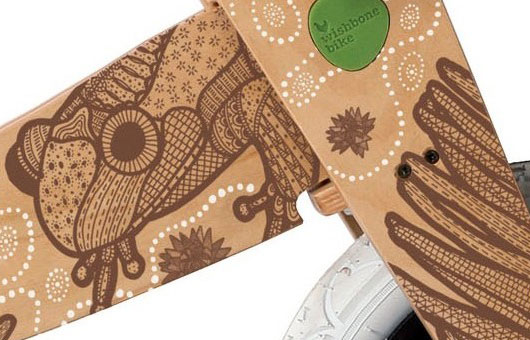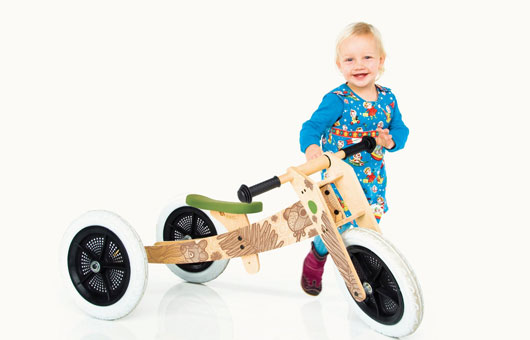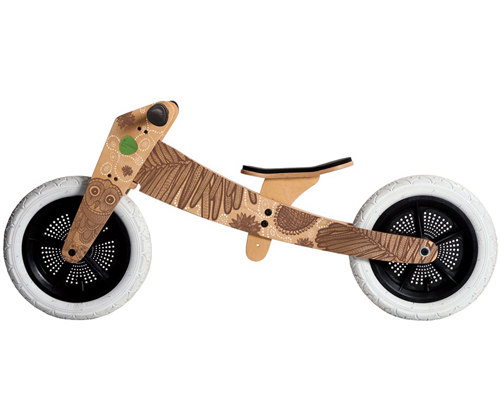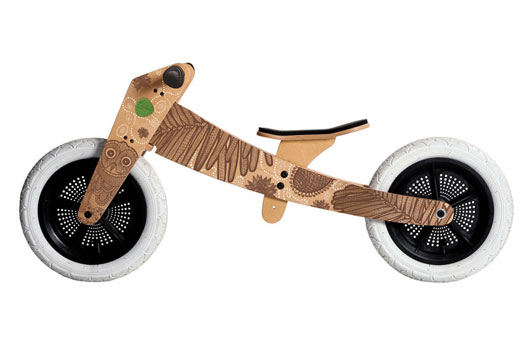The Wishbone bike was designed for toddlers who want to ride but don’t yet possess the strength or understanding to pedal.
In this nifty design there are no pedals but children can still improve their co-ordination when they climb aboard to ride around. Suitable for walking children under the age of 5, the bike can be adjusted from a tricycle to a bicycle as the child grows, removing the need for two or three bikes in their infant years.
This year the exciting Wishbone Design Studio created a limited edition Wishbone Bike that honours the critically endangered Wollemi Pine tree. The Wollemi is an Australian living treasure.
This year Wishbone’s bike honours the tree by featuring illustrations by Helen Lovlee.
The Wollemi Pine is one of the oldest and rarest trees in Australia.
Wishbone founder Jenny McIver says the Wollemi pine was only known by fossil until 1994, when a park ranger discovered 3 stands of living trees in a national park 200 km west of Sydney.
“We work with a different artist each year to create a limited edition design for Wishbone Bike on a topic that challenges us in our daily lives,” McIver says. “This year being the UN International Year of Forests we wanted to highlight the importance of planetary forests to our survival. We asked a young Australian illustrator, Helen Lovelee, to work with us on the Wollemi Wilderness Bike and this is what we have now,” continues McIver.
The finished bike has Helen Lovelee’s distinctively patterned artwork on it depicting the Wollemi Pine tree and three indigenous Australian creatures.
All creatures shown on her design for the bike actually inhabit the Wollemi Wilderness area. Illustrator Lovlee is Central Saint Martins College Graduate who studied Graphic Design and Illustration in Australia, before travelling to London to continue her studies.
Lovlee says: “Pattern is a strong feature of my work. It might be the repetition of dots or the flow of a single line that has a pleasing rhythm which leads me to the end of my image. My inspiration is the natural world, ecology, arts & crafts and ancient cultures.
“For artistic inspiration (for the bike) I looked to the natural world. I made the design about the Wollemi Pine because it’s close to my hometown Sydney and it’s a symbol of survival – their species has survived for 200 million years,” says illustrator Helen Lovlee.
“The Aboriginal meaning of the word Wollemi is ‘open your eyes. Look around you and watch out’. I think this is good advice. People should become aware of what is happening to forests around the world, so forests’ survive to be enjoyed by others in the future,” says Lovlee.
Wishbone Design Studio is a green design studio that was recognised by Time Magazine for their Green Design in 2009. The Wishbone bike was then included in the Top 100 Green Products for 2009.
For more information on how to support the Wollemi pine please visit: http://www.wollemipine.com




